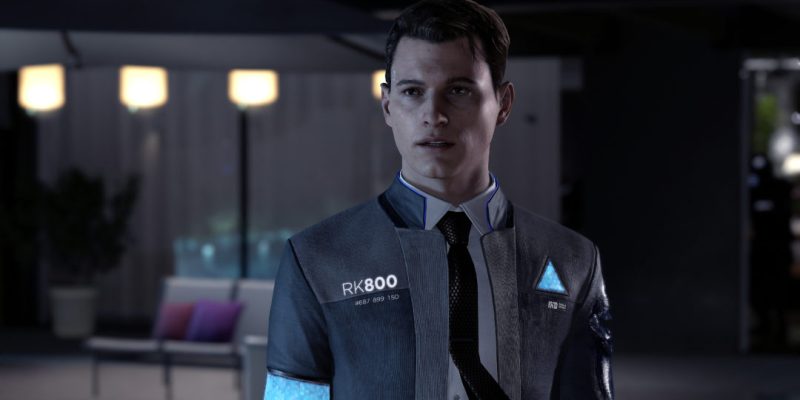Life is hard. Each day, we are confronted with countless decisions that impact our lives in profound and unexpected ways. Since we only have one life to live, we cannot go back and revisit our previous decisions, nor can we determine what would be different if we took a different path. But what if we could?
The multiverse theory of quantum physics tells us that there are an infinite number of parallel universes, and that there is a universe associated with each action we take and each decision we make. In this universe, I had an Eggo waffle for breakfast, but in the universe next door, I made a Belgian waffle from scratch. In yet another universe, I had a waffle eight years ago which created a new universe branch that is largely unrecognizable from this one. According to the multiverse theory, these various universes exist in parallel, alongside one another.
If there were a way to revisit previous decisions, we could see how they affected our lives and could identify the “correct” or “optimal” path for ourselves or for the world. These counterfactual “what if” scenarios have proven immensely popular over the years in virtually every medium. In movies, we have Groundhog Day, The Family Man, and Avengers: Endgame. In comics, Marvel has a dedicated What If series that explores paths not taken, while DC has a host of multiverse worlds that collide with relative frequency.
Perhaps most interesting is the video game sphere, which has developed an entire subgenre dedicated to branching narratives. In most of these games, the challenge is to figure out what decisions will result in the “best” outcome. Most of the time, this is determined through a process of trial and error where players are allowed to back up or retrace their steps after reaching a “bad” outcome. Many of these games — like the Zero Escape trilogy and Detroit: Become Human — include a chart highlighting the complexity of the underlying narrative.

Surprisingly, the real world legal system uses a similar branching narrative structure for appeals. Everyone in the legal profession recognizes that we work in a field with incredibly high stakes — a judge’s decision can literally make the difference between life and death. As a result, nearly every decision a judge makes can be challenged or appealed. That’s kind of a big deal when one considers that judges typically make hundreds or thousands of decisions in any given case, ruling on things like case scheduling, whether to admit or exclude a particular piece of evidence, and whether to grant or deny an objection or motion. In order to make the appeals process manageable, courts prohibit parties from appealing a trial judge’s decision until a final order has been entered in the case.
In practice, this means that each party keeps track of the decisions it thinks are incorrect and raises all of its objections at once at the end of the case. This is similar to a design that requires video game players to reach an ending before going back and changing any of the decisions they made along the way. If the trial judge didn’t make any mistakes, or if their mistakes were deemed insignificant or “harmless”, then the appeals court will affirm the trial judge’s decision — meaning that the trial court reached the “true” ending of the case. However, if the trial judge did make a mistake, the appeals court can send the case back with instructions to restart the case at the point just before the mistake was made. This is like revisiting a previous branch in a video game and making a different decision to avoid a “wrong” ending.
This is where things get interesting. If a mistake was made all the way at the beginning of a case, then the trial proceedings would basically restart along a modified decision track, creating something that can be understood as a “parallel world” trial. If a decision in that trial turns out to be wrong, then you would end up with three trials, each tried according to different rules and resulting in very different endings. As an example, consider the Apple v. Samsung smartphone case which had its damage awards set at $1 billion, $290 million and $119 million before settling on $539 million. To add more complexity to the mix, it’s possible for an appeals court to make the wrong decision, in which case a second round appeal can be made to the Supreme Court.
There is no limit to how many appeals can be taken in a particular case. Some cases go up and down through the various levels of appeal dozens of times. One of the school desegregation cases, for example, involved over 50 decisions made in connection with appeals and has a flowchart that rivals even the most complex branching narrative games.

Branching narrative stories are popular because they allow us to see the impact and significance of our choices. Some decisions, like what to eat for breakfast or what color shirt to wear, have little or no impact on our lives or those of our video game counterparts. Other decisions, like whether to trust someone or obey a superior’s instructions, can make the difference between “true” and “false” endings.
The same is true in the legal system. Some decisions, like whether to hold 30-minute arguments or 35-minute arguments, will not impact the outcome of a case. Other decisions, like whether to exclude a piece of evidence, could make some difference in a case. Still other decisions, like whether to grant a motion to end a case, obviously make a difference. The final order rule and the resultant branching trial narratives help lawyers and judges decide which issues matter and help judges reach the “correct” ending, even if they don’t “complete” the case or unlock all of the possible endings.
